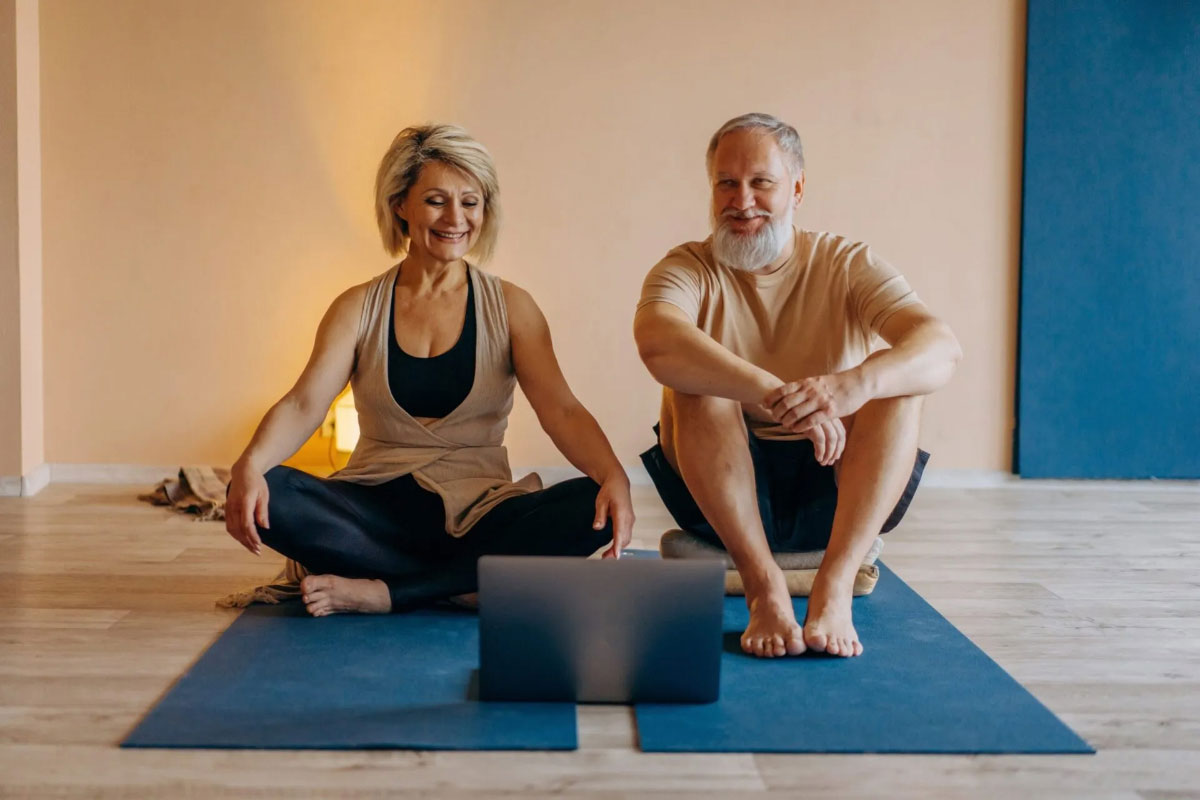How To Know If a Virtual Yoga Teacher Training is Right for You
While the pandemic closed the door on many facets of “normal” life, it allowed online yoga platforms to flourish. Due to isolation, many yoga practitioners relied on virtual classes to stay in touch with their practice and teachers during a turbulent time. However, this was even taken a step further. Many yoga teachers teaching today actually earned their certifications completely online. Curious of the pros and cons to virtual yoga teacher trainings, we spoke to two worldly yoga teachers to hear how they adapted to this relatively new phenomenon.
Maria Jones of Yuva Yoga in the UK started her online education courses right at the brink of lockdown when scheduled trainings could not take place in the traditional face-to-face format. She immediately got set up with a mic, lightbox and Zoom subscription and got to work. At first, she stuck to the Zoom format like most everyone else, but eventually learned of a better way to reach trainees.
Jones specializes in chair-based yoga and found her self-paced format was widely preferred over students who may have been burnt out with live classes.
“Students should really consider online trainings,” Jones says. “Put your tech fears behind and dive into a world where support is only an email away, plus you can pause, rewind and replay at your convenience and save money and time on travel.”
Jones likes the program Teachable for its ability to track students’ progress and engage through comments and coaching sessions.
As a teacher of teachers herself, Jones says her favorite part about online trainings is the ability to connect with yogis from all over the world — something previously unattainable. Plus, the cost of trainings themselves are relatively low because there is no venue costs — something both trainers and trainees can enjoy.
“As the teacher I have had to be quite organized to create a calm and quiet atmosphere in the house during trainings and meetings. I usually kick my family out of the house for the day,” she says. “I suggest that the students do the same. Book time in the calendar to immerse themselves in their learning when they can. Maybe daily, or weekly. I even know of people that have booked spaces locally to attend trainings and retreats … sounds like a mini holiday to me from home.”
Julia Clarke, the restorative yoga teacher who splits her time between Scotland and Colorado, plans to continue offering online yoga teacher trainings indefinitely. She loves the ability to make her training accessible to people from all over the world and their affordability because of not having to rent a studio or supply materials.
Clarke offered her restorative yoga teacher training and Ayurveda 21-say detox online and found that people’s attention seems to improve when they’re comfortable and in their own space. She noted that the freedom to eat and drink as one pleases, in addition to other basic needs, makes online learning a more hospitable environment.
“When you don’t have to take long enough breaks for all 10 students to use one bathroom, you actually end up getting through the material faster, so it ends up being a more efficient use of your time,” Clarke says.
However, as teacher with years and years of experience, Clarke admits there are some trainings that simply don’t lend themselves to an online format very easily, like yoga styles that require a lot of hands-on experience. And of course, connecting with real humans in real time is important.
When looking at whether a virtual yoga teacher training is right for you, check out these YOGA + Life resources:
